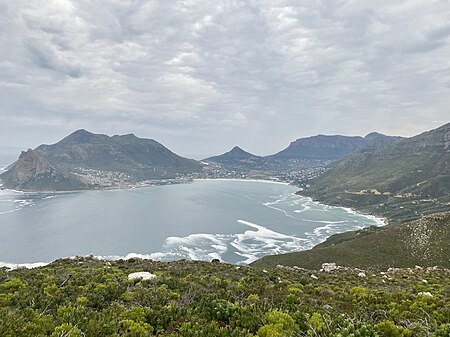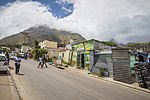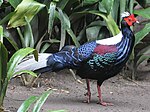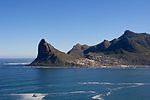Hout Bay
Suburbs of Cape TownUse South African English from May 2020

Hout Bay (Afrikaans: Houtbaai, meaning "Wood Bay") is a seaside suburb of Cape Town in the Western Cape province of South Africa. It is situated in a valley on the Atlantic seaboard of the Cape Peninsula, twenty kilometres south of the Central business district of Cape Town. The name "Hout Bay" can refer to the town, the bay on which it is situated, or the entire valley. The area was originally made up of two farms, which were slowly subdivided to make way for urban expansion. While still maintaining its rural atmosphere, the area of Hout Bay has more than 5,960 residences inhabited by a population of at least 17,900 people (as of 2011).
Excerpt from the Wikipedia article Hout Bay (License: CC BY-SA 3.0, Authors, Images).Hout Bay
Daphne Street,
Geographical coordinates (GPS) Address Nearby Places Show on map
Geographical coordinates (GPS)
| Latitude | Longitude |
|---|---|
| N -34.033333333333 ° | E 18.35 ° |
Address
Daphne Street
Daphne Street
7872 , Cape Town Ward 74
Western Cape, South Africa
Open on Google Maps









